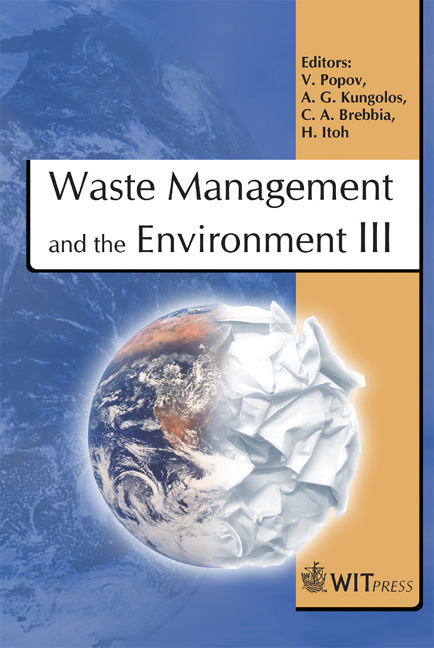Development Of A Way To Recycle Waste Glasses: Preparation Of Porous Materials From Cathode-ray-tubes And/or Packaging Glasses At The End Of Their Life Time
Price
Free (open access)
Transaction
Volume
92
Pages
8
Published
2006
Size
595 kb
Paper DOI
10.2495/WM060311
Copyright
WIT Press
Author(s)
M. Cambon & B. Liautard
Abstract
French and European legislation concerning waste requires studies to be performed on the recycling of products issued from commercial electronic devices. Cathode ray tubes (CRT), and in particular glasses which constitute them, are of major interest. The chemical composition of these glasses is very important. Screen glass is composed of 8-12 wt% BaO and 6-10 wt% SrO and the cone glass which has a lower wall thickness than that of the screen contains 19-23% PbO. Previous characterizations of these special glasses led us to propose a way of recycling in which used CRT glass could be treated in order to respond to the legislation. Foam glass could be a possible solution to convert CRT glass into a material with very promising properties. A systematic study of the process parameters showed the possibility of modifying the properties of the porous material. The density can vary from 0.4 to 0.8 g.cm-3 and the mechanical stress with a uniaxial compressive loading from 20 to 60 MPa. The materials have good insulation properties: thermal conductivity K inferior to 0.25 Wm-1K-1 and εr between 2.1 and 3.1 at 25°C. They are non-combustible (like the bulk glass), they resist corrosion in any environment and they present a low thermal expansion coefficient. Keywords: cathode ray tube glass, recycling, cellular materials, microstructure, porosity, mechanical properties, electrical and thermal conductivity.
Keywords
cathode ray tube glass, recycling, cellular materials, microstructure, porosity, mechanical properties, electrical and thermal conductivity.





